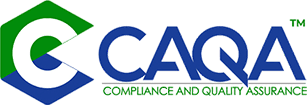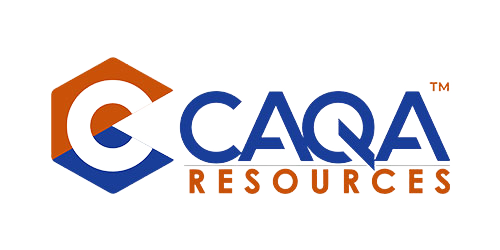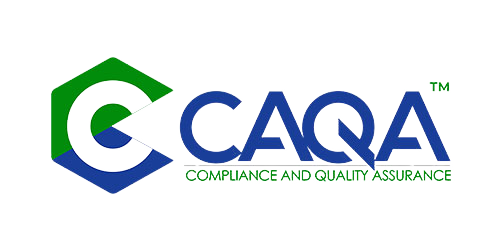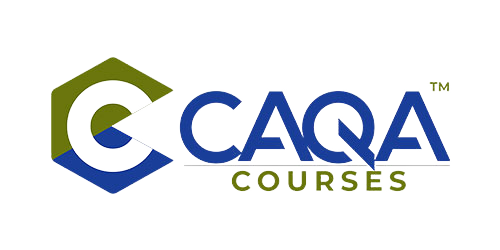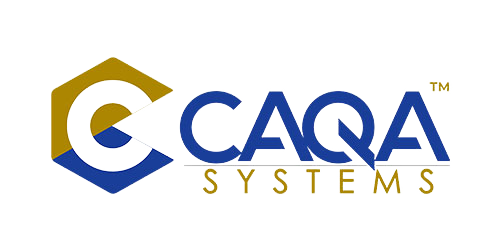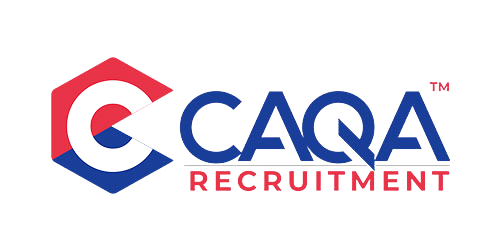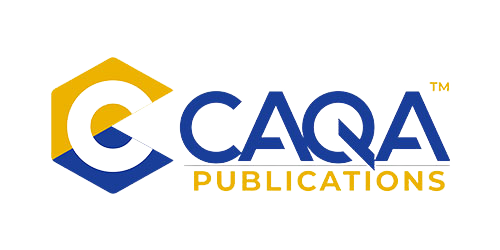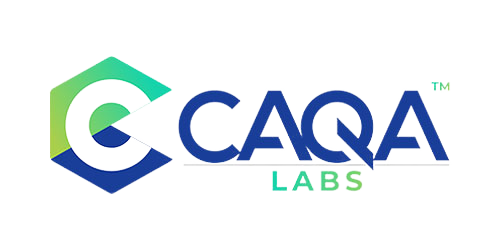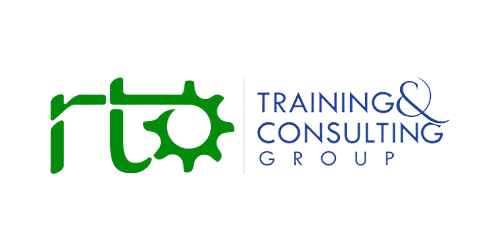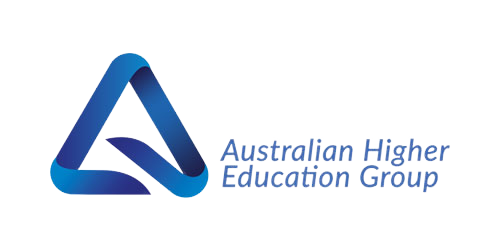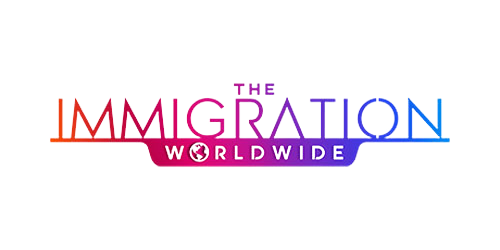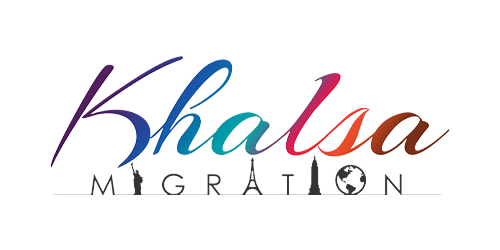Industry Reports Highlight Growing Gap Between Compliance Requirements and Educational Quality Standards
By CAQA Education Correspondents
The Australian Skills Quality Authority (ASQA) faces increasing scrutiny from vocational education stakeholders over its audit practices, as the regulator's recent cancellation of over 21,000 qualifications raises questions about how non-compliant training practices were able to proliferate in the first place. While ASQA's enforcement actions aim to protect the integrity of Australia's $51 billion VET sector, industry reports and Senate enquiries suggest that inconsistent auditing standards and resource constraints may have contributed to a compliance-focused environment that fails to effectively ensure educational quality.
ASSESSMENT PRACTICES UNDER EXAMINATION
Industry surveys and sector reviews have raised significant concerns about the assessment methods approved for use by some Registered Training Organisations (RTOs) during ASQA audits, particularly for Diploma (Level 5) and Advanced Diploma (Level 6) qualifications. The Australian Qualifications Framework (AQF) requires that graduates at these levels demonstrate complex problem-solving, critical thinking, and the autonomous application of knowledge and skills in varied and unpredictable contexts. However, sector research, including a dedicated NCVER study, has found that a substantial proportion of assessments at these higher qualification levels rely predominantly on knowledge-based testing, with insufficient emphasis on practical skill demonstration and authentic assessment environments. For example, 95.1% of surveyed practitioners identified poorly designed assessment tools as a key characteristic of inadequate assessment at these levels, and 58.5% cited a lack of rigour as a significant issue. Additionally, 39% of respondents noted that assessments often lack authentic environments and resources, limiting opportunities for students to demonstrate their skills in realistic or workplace-like settings. These findings suggest that some RTOs’ assessment practices may not fully align with the AQF’s requirements for validating complex and autonomous competencies.
Sector reviews also highlight that many assessors at Diploma and Advanced Diploma levels possess only the minimum required assessment training and report ambiguity in interpreting competency standards. This, combined with a lack of systematic moderation and validation of assessment practices, contributes to inconsistencies and raises questions about the credibility of some VET qualifications.
Education quality specialist Sukh Sandhu underscores the importance of aligning assessment strategies with the sophisticated skills these credentials represent:
"When assessment doesn't match the qualification level, it creates challenges for both students and employers who rely on these credentials."
In summary, while the AQF mandates robust, holistic assessment for higher-level VET qualifications, sector evidence indicates persistent issues with over-reliance on knowledge-based testing, insufficient practical assessment, and inconsistent quality assurance, highlighting the need for stronger alignment between assessment methods and intended learning outcomes at Diploma and Advanced Diploma levels.
VOLUME OF LEARNING CONCERNS
Sector reviews and regulatory evidence highlight ongoing concerns about program duration and the time allocated for skill development in vocational education. The Australian Qualifications Framework (AQF) specifies that Diploma qualifications should involve a volume of learning of 1–2 years, or 1,200–2,400 hours, for learners without relevant prior experience. This encompasses all learning activities, including guided instruction, self-directed study, workplace learning, and assessment. However, multiple reviews and ASQA’s 2017 strategic report have documented that some Registered Training Organisations (RTOs) deliver programs in significantly shorter timeframes than the AQF minimums, particularly for students new to the field. While shorter durations may be justified for learners with substantial prior experience or credit transfer, sector experts and industry representatives remain concerned that accelerated programs for novice learners do not allow adequate time for skill development, practice, and assessment.
ASQA’s regulatory audits consistently find that compliance with training and assessment requirements (Standard 1 of the RTO Standards) is the most common area of non-compliance, often due to training and assessment strategies that fail to provide sufficient opportunity for learners to achieve competency, especially in compressed courses. These persistent issues suggest that insufficient program duration continues to pose risks to training quality, learner outcomes, and overall sector integrity.
TRAINING MATERIALS MARKET AND QUALITY CONCERNS
A significant commercial market has emerged for pre-packaged training and assessment materials, with RTOs frequently purchasing these resources to support their delivery and compliance obligations. While many providers, such as CAQA Resources and RTO Training Resources, offer high-quality, regularly updated materials that are praised for their clarity, structure, and ease of contextualisation, sector reviews and industry testimonials consistently highlight variable standards across the market. Some resources are well-aligned with unit requirements and facilitate successful audits, but others have been criticised for being written at inappropriate levels, lacking industry relevance, or failing to meet compliance requirements.
RTOs invest considerable time and money in customising and contextualising commercial materials to suit their learner cohorts, industry needs, and delivery modes. Internal development of compliant, contextualised training resources can cost upwards of $40,000 and take several months, making commercial alternatives attractive for many providers. However, recent regulatory action by ASQA, including the cancellation of multiple RTO registrations and the revocation of over 21,000 qualifications, has exposed significant risks associated with over-reliance on purchased resources that have not been adequately validated or contextualised. In several high-profile cases, RTOs were found to have issued certifications without appropriate training or assessment, often relying on inadequate or non-genuine materials.
This reliance on commercial resources has contributed to a compliance-focused marketplace, where documentation and audit-readiness are sometimes prioritised over the design of assessments that genuinely measure real-world competency. The previous prescriptive compliance regime under the 2015 Standards encouraged a “tick-box” approach, which sector commentary and regulatory reviews have criticised for shifting attention away from quality outcomes. The new outcome-based Standards for RTOs 2025, set for implementation in July 2025, aim to address this by shifting the focus from administrative compliance to demonstrable quality in training and assessment, learner outcomes, and industry relevance.
Despite the availability of high-quality commercial resources, ASQA and sector experts caution that purchasing these materials does not guarantee compliance. RTOs remain responsible for validating and contextualising resources to ensure they align with unit requirements, industry standards, and regulatory expectations. ASQA’s 2017 audit report found that up to 80% of RTOs were non-compliant with Standard 1, often due to inadequate assessment tools and poorly contextualised resources. Regular validation, industry engagement, and ongoing updates are essential to maintain compliance and training quality.
While commercial training and assessment materials offer cost-effective and often high-quality solutions, their use requires careful validation and contextualisation. The sector’s shift towards outcome-based standards underscores the need for RTOs to prioritise authentic assessment and continuous improvement over mere documentation, ensuring that training genuinely equips learners with the skills and knowledge required by industry.
AUDIT CONSISTENCY AND RESOURCE CHALLENGES
ASQA is responsible for regulating approximately 3,842 Registered Training Organisations (RTOs) across Australia (excluding Western Australia and Victoria), with an average staffing level of 225 full-time equivalent employees in 2024–25 and a total budget of $65.99 million. This equates to roughly one ASQA staff member for every 17 RTOs, underscoring the significant workload and oversight challenge faced by the regulator.
Independent reviews, including the 2021 Australian National Audit Office (ANAO) report and subsequent sector analyses, have repeatedly identified inconsistencies in ASQA’s audit practices and regulatory decision-making. Stakeholder feedback and Senate enquiries confirm that different ASQA auditors may interpret the same standards in varying ways, leading to uncertainty and frustration among RTOs about what constitutes compliance. For example, there have been documented cases where identical materials were assessed as compliant at one RTO and non-compliant at another, with no clear rationale provided for the differing outcomes. Other cases include auditors insisting on rote, word-for-word student answers, contradicting AQF requirements for critical thinking at higher qualification levels, and administrative errors such as audit reports referencing the wrong provider or scope.
RTO operators and consultants frequently describe the regulatory environment as one where the “goalposts keep shifting,” with contradictory advice and changing requirements between audits or even within the same application process. The introduction of revised Standards for RTOs, scheduled for implementation in 2025, is expected to increase subjectivity in interpretation, raising further concerns about regulatory consistency.
In response to these challenges, ASQA has introduced several internal measures to improve consistency, including auditor moderation workshops, a moderation log to align compliance decisions, and a lead auditor reference group to address inconsistencies. There have also been ongoing reforms to audit methodology and compliance management, as recommended by multiple reviews. Despite these efforts, sector reviews and industry surveys indicate that perceptions of inconsistent and unpredictable regulation persist, with audit reports sometimes described as “long, convoluted and difficult to read,” and regulatory decisions not always communicated clearly or in a timely manner.
Industry consultants and RTO operators emphasise that consistent regulation is essential for quality improvement and sector confidence. As one sector consultant notes, “When providers receive different guidance from different auditors, it becomes difficult to implement sustainable quality systems.” The sector’s experience with shifting compliance expectations and variable audit outcomes continues to be a source of operational uncertainty and risk.
ASQA’s ability to provide effective, consistent regulation remains challenged by the scale of its provider base and limited staffing. The rollout of revised standards in 2025 will further test the regulator’s capacity to deliver clear, stable, and fair regulatory guidance. While internal reforms are underway, the sector continues to call for greater transparency, more robust auditor training, and clearer communication to ensure that regulatory oversight supports, not hinders, quality improvement across Australia’s VET sector.
THE HUMAN AND ECONOMIC IMPACT
The cancellation of over 21,000 qualifications by ASQA in 2024–25 has triggered far-reaching consequences for students, employers, and the broader reputation of Australia’s vocational education sector. The majority of these cancellations stemmed from providers in high-demand fields such as aged care, disability support, construction, and early childhood education. For example, Luvium Pty Ltd alone saw 7,360 qualifications targeted for cancellation, with more than 6,400 ultimately revoked after former students did not respond to ASQA’s notices of intent. Students affected by these cancellations face significant financial and career disruption. Many invested $3,000–$8,000 or more in courses that are now invalidated, with no compensation available from deregistered providers. The loss of credentials is particularly devastating for those in vulnerable groups, such as recent migrants and individuals seeking career changes, who may lack the resources to navigate ASQA’s appeals process, especially given the short seven-day response window. In sectors like aged care and disability support, over 5,800 workers have been left unable to prove their qualifications, jeopardising their employment and livelihoods. For international students, the situation is even more precarious: while some providers were not registered to deliver to overseas students, others were, and the loss of a qualification can threaten visa status and future migration pathways. Employers in critical sectors already facing acute skills shortages, such as construction and healthcare, are now grappling with increased uncertainty over the validity of staff credentials. Industry associations report that 67% of businesses in these fields have introduced additional verification steps, such as requiring authenticated Unique Student Identifier (USI) VET transcripts, to confirm qualifications. This added layer of scrutiny complicates recruitment and workforce planning, particularly in industries projected to need tens of thousands of new workers in the coming years. Employers must also navigate legal and ethical dilemmas regarding staff whose qualifications have been cancelled, with guidance suggesting options such as increased supervision, reassignment, or, where necessary, suspension while compliance is clarified. The scale of these cancellations has sent shockwaves through the VET sector, undermining trust in the integrity of Australian qualifications. Legitimate providers report a 12% decline in enrollments as prospective students question the value and reliability of VET credentials. Internationally, Australia’s reputation as a destination for quality vocational education, once a $3.9 billion export industry, has suffered, with concerns about instability and the risk of visa complications for overseas graduates. These events have highlighted systemic weaknesses in ASQA’s regulatory approach. Critics point to a reactive, enforcement-heavy model that fails to proactively identify high-risk providers or support affected students adequately. Inconsistent audit outcomes and a lack of clear communication have further eroded confidence, with 80% of ASQA’s contested decisions reportedly overturned on appeal. The absence of compensation or transition support for students caught in these regulatory actions has intensified calls for urgent reform, including improved auditor training, real-time risk monitoring, and structured pathways for students to demonstrate their skills or regain valid credentials. While ASQA’s crackdown on non-compliant providers aims to protect the integrity of Australia’s VET system, the widespread cancellation of qualifications has exposed students and employers to significant hardship, exacerbated existing skills shortages, and damaged the sector’s domestic and international standing. Proactive regulatory reform and enhanced support mechanisms are urgently needed to restore confidence and stability.
CONFLICT OF INTEREST
Concerns about conflicts of interest within the Australian Skills Quality Authority (ASQA) have become a significant issue for the vocational education and training (VET) sector. Sector reviews, legal cases, and stakeholder accounts indicate that some ASQA officers have blurred the boundaries between their regulatory responsibilities and private consultancy roles, undermining confidence in the impartiality of audits and compliance decisions. For instance, there have been reports of auditors promoting their own or affiliated consultancy services to Registered Training Organisations (RTOs), sometimes suggesting that after a mandatory six-month “cooling-off period” post-audit, RTOs could engage their services. This practice creates ambiguity about whether audit outcomes are being influenced by commercial interests rather than objective compliance standards. In some cases, RTOs have reported feeling pressured to sever ties with certain consultants during audits, with the implication that switching to a “preferred” provider could result in more favourable compliance outcomes.
The so-called “revolving door” between ASQA and the sector is another source of concern. Current policies allow auditors to join RTOs or consultancies they have previously regulated after as little as six months, a period many critics argue is insufficient to prevent conflicts of interest or the appearance of bias. There have been cases where an auditor who reviewed a provider later joined its board, raising questions about preferential treatment and the integrity of subsequent regulatory decisions. These practices are compounded by the lack of statutory requirements for extended cooling-off periods or for public disclosure of external interests by ASQA staff, unlike in some other regulatory bodies.
Further, ASQA’s enforcement actions have sometimes been criticised as being used for political or strategic purposes, rather than being strictly evidence-based. Reports indicate that a significant proportion of cancellation decisions are overturned upon internal review, suggesting that initial rulings may not always be robust. The high costs associated with defending against ASQA audits-often reaching hundreds of thousands of dollars-can cripple smaller providers and deter legitimate appeals, exacerbating the power imbalance between regulator and regulated.
Systemic accountability gaps also persist. There are documented instances where ASQA staff made defamatory claims about RTOs during appeals, or where Freedom of Information (FOI) requests were routinely denied or managed by the same officers involved in the original decisions, perpetuating conflicts of interest and limiting transparency. While ASQA’s Code of Practice requires officers to avoid real or perceived conflicts of interest and to disclose any material interests, sector observers argue that enforcement of these standards is inconsistent and that the appearance of impartiality is just as critical as actual impartiality for maintaining public trust.
ECONOMIC SIGNIFICANCE OF THE VET SECTOR
Australia’s vocational education and training (VET) sector is integral to the nation’s $51 billion international education export industry and a vital buffer against economic downturns in other sectors. The sector’s global reputation for quality has long been a key factor in attracting international students, supporting tens of thousands of jobs and contributing to national prosperity. However, recent regulatory turbulence and aggressive compliance actions by ASQA are challenging this competitive edge. In 2023–24, ASQA sanctioned 35 providers and suspended 10 others, while cancelling more than 21,000 qualifications, actions that, although targeted at non-genuine operators, have had broader sector impacts.
Legitimate VET providers have reported a 12% decline in enrolments, reflecting growing student uncertainty about the stability and value of Australian credentials. This is particularly concerning as Australia competes directly with countries like Canada and the UK for international students, with both now matching Australia’s 25% first-choice market share among prospective students.
The regulatory environment has also become more challenging for VET providers. ASQA’s staff-to-RTO ratio, approximately 1:17, limits the regulator’s ability to provide consistent oversight, and a 73% increase in sanctions since 2021–22 has contributed to operational paralysis for some smaller providers. These developments coincide with a projected workforce shortfall of 65,000 in high-demand sectors such as aged care by 2025, making the reliability and recognition of VET qualifications even more critical for Australia’s economic and social priorities.
While ASQA’s risk-based approach is designed to safeguard the integrity of the VET system and protect students from fraudulent providers, industry stakeholders warn that a “compliance-first” strategy, without proportional investment in quality improvement and clear pathways for provider support, risks undermining Australia’s reputation and ceding market share to global competitors. International students, who contribute a minimum of $29,710 in savings per visa holder, now face heightened risks of credential cancellation, exploitation, and visa uncertainty, further eroding Australia’s appeal as a study destination.
To maintain its position as a world leader in international education, Australia must balance robust regulatory action with transparent, outcome-focused quality improvement initiatives. Sustained government investment, improved provider support, and a renewed focus on student outcomes are essential to restore confidence and ensure the VET sector continues to drive economic growth, workforce development, and international engagement.
ASQA’s Auditor Qualifications: Sector Concerns and Regulatory Contradictions
Concerns about the qualifications and sector expertise of ASQA auditors have become a focal point in debates about the integrity and effectiveness of Australia’s VET regulatory framework. The Standards for VET Regulators 2015 explicitly require that auditors possess vocational competencies at least to, and preferably above, the level being delivered and assessed by the providers they audit, as well as current industry skills, relevant registration or licencing, and up-to-date knowledge of vocational training and assessment. However, sector evidence and official disclosures indicate these requirements are not always met in practice. For example, as reported by Education Issues Australia, in 2019, only 30% of ASQA’s regulatory employees were enrolled to acquire mandatory qualifications, and ASQA itself has acknowledged that, on occasion, it employs staff who do not hold all required credentials. This gap raises serious questions about the validity and reliability of audit outcomes, especially when auditors may not meet the Schedule 1 requirements or have not themselves worked in the VET or ELICOS sectors they are auditing. The lack of alignment between the qualifications required of RTO trainers and assessors and those held by ASQA auditors is seen as a contradiction that undermines the credibility of regulatory decisions. Further, there is currently no requirement for independent annual validation of auditor qualifications and experience, nor are there clear accountability mechanisms or penalties for breaches of these standards, despite the existence of strict penalties for RTOs who fail to comply with similar requirements. This regulatory imbalance has led to calls for reform, with sector advocates demanding that ASQA auditors be held to the same high standards as the providers they regulate, and that transparent, independent oversight be introduced to ensure audit integrity and restore trust in the national VET system.
A PATH TOWARDS IMPROVEMENT
Sector experts suggest several approaches to address the identified challenges in ASQA's regulatory framework:
First, clearer guidance on assessment expectations for different AQF levels could help standardise audit approaches and provide RTOs with consistent quality benchmarks. This includes specific guidelines on appropriate assessment methods for higher-level qualifications that require complex skill demonstration.
Second, enhanced auditor training and standardisation could help address the inconsistency issues identified in industry feedback. Developing more transparent audit rubrics and decision-making frameworks could improve predictability for providers while maintaining high standards.
Third, additional resources for both ASQA and RTOs focused on educational quality rather than just compliance documentation could help shift the focus towards meaningful outcomes for students and employers. This approach aligns with ASQA's stated commitment to becoming a more effective and modern regulator.
CONCLUSION: BALANCING COMPLIANCE AND QUALITY
The recent wave of qualification cancellations highlights both the necessity of regulatory enforcement and the challenges in Australia's VET quality assurance system. While ASQA's actions protect the integrity of qualifications, they also raise important questions about how to more effectively prevent non-compliance before it affects thousands of students.
As Australia faces critical skills shortages across multiple sectors and relies on vocational education to develop much-needed workforce capabilities, finding the right balance between strict compliance enforcement and enabling quality education has never been more important. The challenge ahead is developing a regulatory approach that effectively ensures both documentation compliance and genuine educational quality without creating unnecessary administrative burdens that distract from the core mission of skills development.
Industry stakeholders and regulatory bodies now have an opportunity to collaborate on evolving Australia's VET sector quality framework to better serve students, employers, and the broader economy while maintaining the standards that underpin Australia's reputation for educational excellence.
